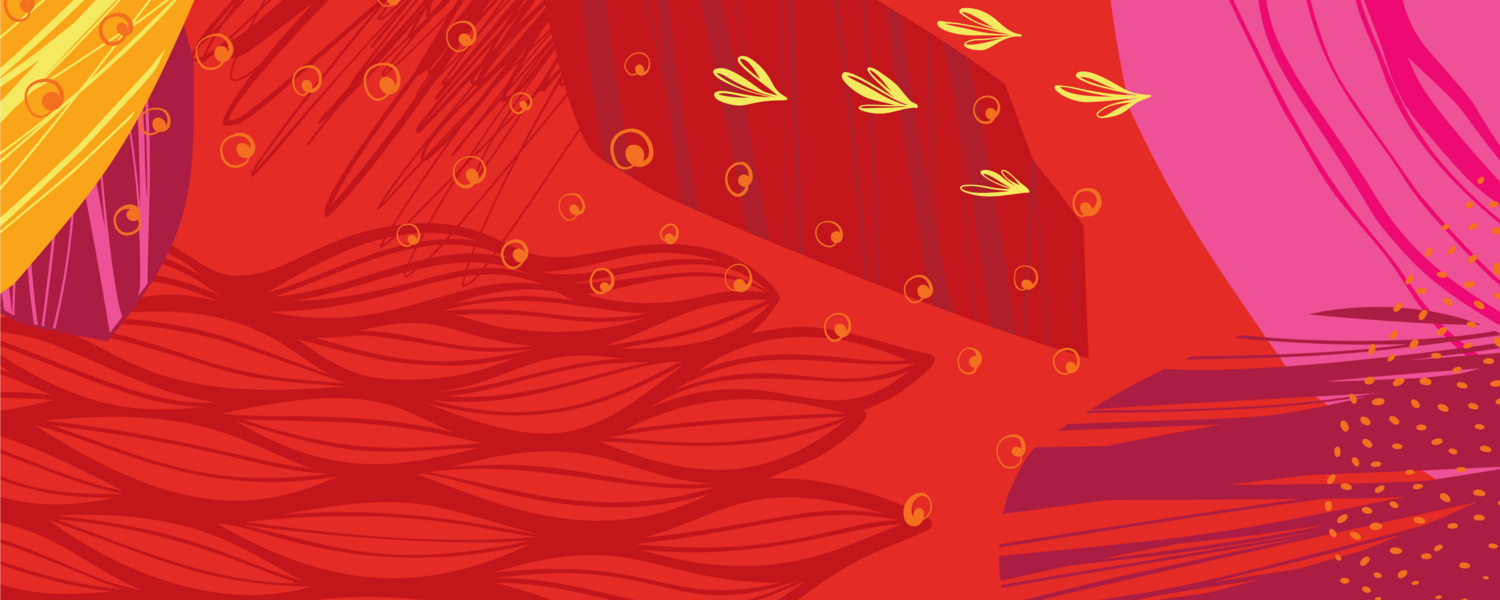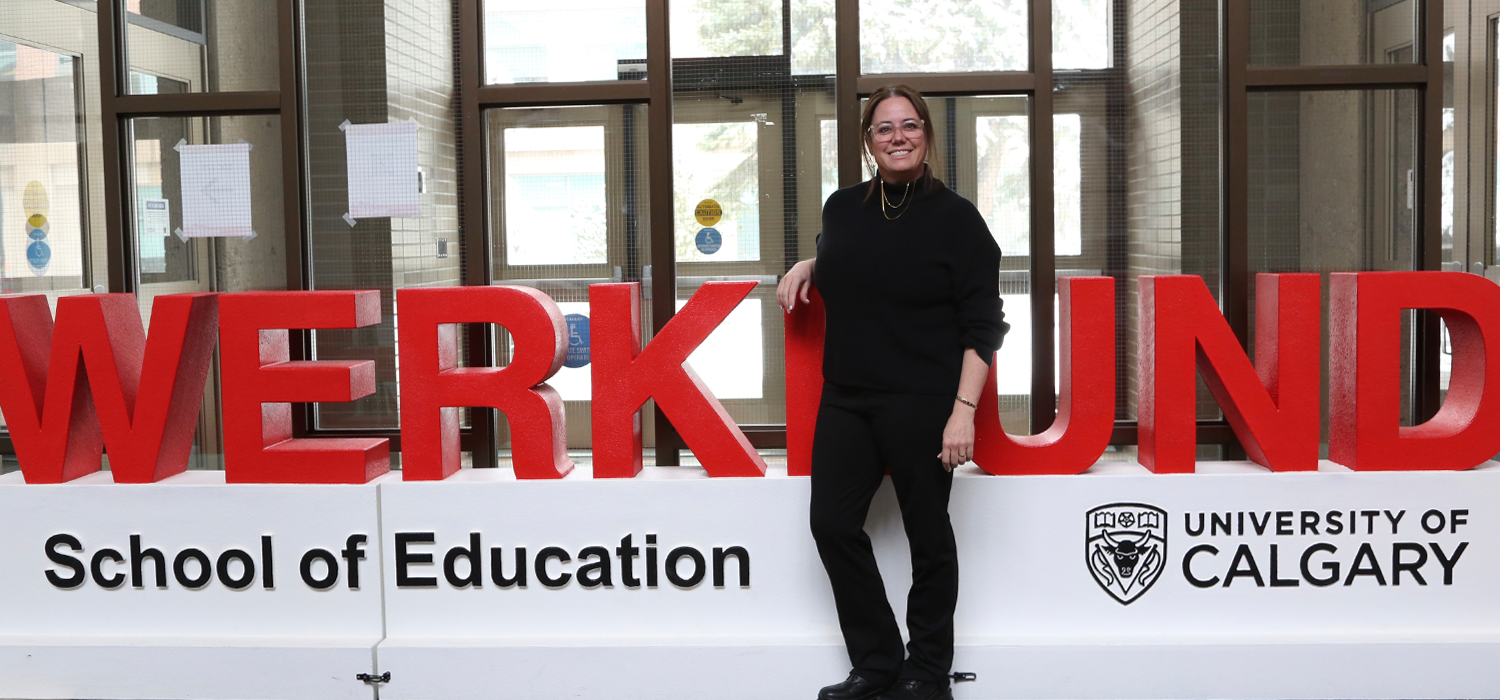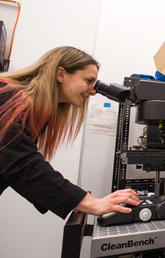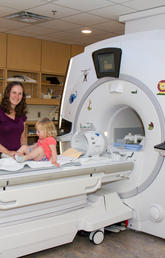“Art smashes away from the soul the dust of everyday life.” More than an elegant aphorism, Picasso’s oft quoted remark points to a fundamental truth long known to creatives, but that is now increasingly being understood as having a basis in scientific fact.
Dr. Brittany Harker Martin, PhD’12, a Werklund School of Education associate professor whose research focuses on the relationship between art, brain, and cognition, has been working to reconcile and revive two promising yet disparate strands of 20th century scholarship that independently recognized art-making as a mechanism for triggering positive mental states.
In the late 1970s, art educator and neurocognition scholar Betty Edwards coined the term R-Mode to describe the perceptual shift that occurs when artists are engaged in their practice, from a symbolic/analytic mode to a relational/visuospatial mode. At almost the same time, Mihaly Csikszentmihalyi, approaching the subject from the perspective of psychology, described a similar mental experience as Flow. According to Martin, he was “particularly intrigued by the phenomenon of visual artists who seem to work hard all day, and yet emerge feeling mentally refreshed.”
Martin notes that both researchers eventually placed their focus on other aspects of creativity, leaving “the trail cold” in terms of this art-based mental shift. Nonetheless, she has endeavored to dust off the cold case file to quantify R-Mode/Flow for the first time.
“We also did some preliminary neuro-imaging work with the Dunn Lab and we could totally see Flow happening,” says Martin, an associate member of the Hotchkiss Brain Institute and the Mathison Centre for Mental Health Research and Education. “The images that I have show rolling brain waves going straight up into gamma spikes, which are like high energy, ‘aha-moment’ waves, and then rapidly dropping down into low theta waves. It's exactly how Flow is described as we experience this kind of ecstasy and serenity at the same time. And we can see the brainwaves doing this.”
Helping children build self-regulation skills
In her 2021 study, "Art Making Promotes Mental Health: A Solution for Schools That Time Forgot," Martin administered a series of basic art exercises for a sample group of 104 school-based mental health professionals. The participants worked in one of 85 sites across the province as part of Alberta Health Services’ Mental Health Capacity Building in Schools Initiative.
Martin measured Flow and R-Mode using eight-item scales based on Csikszentmihalyi and Edwards’ work, respectively, to find these correlated. She also measured mental health capacity before and after a week of art-making, and added a new measure to capture a phenomenon she calls mental floating or Float — her hypothesized state that precedes Flow and that assists the shift from one perceptual state to another. The results were encouraging, suggesting that participation in art-based activities triggered both Float and Flow, and significantly increased mental health capacity over time.
“The most important thing that we learned from that is that if you use art on a regular basis there are benefits to mental health capacity,” says Martin. “You learn more about your mind and how you can control it by going through the process.”
This, she says, can have tremendous value in schools. “If kids can learn to mentally Float, then they’ve effectively found a useful tool for self-regulation, one of the hardest things to teach, and a major challenge for school psychologists.
“A big part of this is learning to shift away from our executive functioning, something we all need to count on in our lives, most of which is in the front of the brain,” she explains. “That’s all happening in the prefrontal cortex, and we need to find ways to give it a rest and activate the other parts of the brain that are wired to send out positive signals and positive neurochemistry, like dopamine, endorphins and serotonin. It's just there in everyone’s head, and all we have to do is just learn how to tap it, and to provide that as a tool in schools.”
Bridging art and psychology
Nonetheless, much more research is needed, which Martin concedes can be a challenge in terms of bridging the seemingly disparate disciplines of art and psychology. She explains this is as a scholarly divide, where the art world tends to lean towards a phenomenological worldview, which is often at odds with the positivist functionalist approaches of science. It has been a barrier for funding, with reviewers deeply entrenched in one side or the other, unable to see the bigger picture.
“When I talk about this with people in creative industries, and in the arts, they're very familiar with the experience of it. But the field of arts and arts education often don't merge with anything scientific, like the psychometrics or neuroscience of my work, though that is changing. There's a growing trend now looking specifically at a field called neuroaesthetics that is starting to recognize that we can learn from each other, and we need to do this," she says. “I'm one of those people who wants to do both. When I got my doctoral degree, I was really interested in: How do I quantify these things? How do I scientifically study these things in a way that not only can I understand it through that lens, but also bridge the divide between these fields. It’s time for a much more transdisciplinary approach to these complex problems that places the human experience at the centre.”







